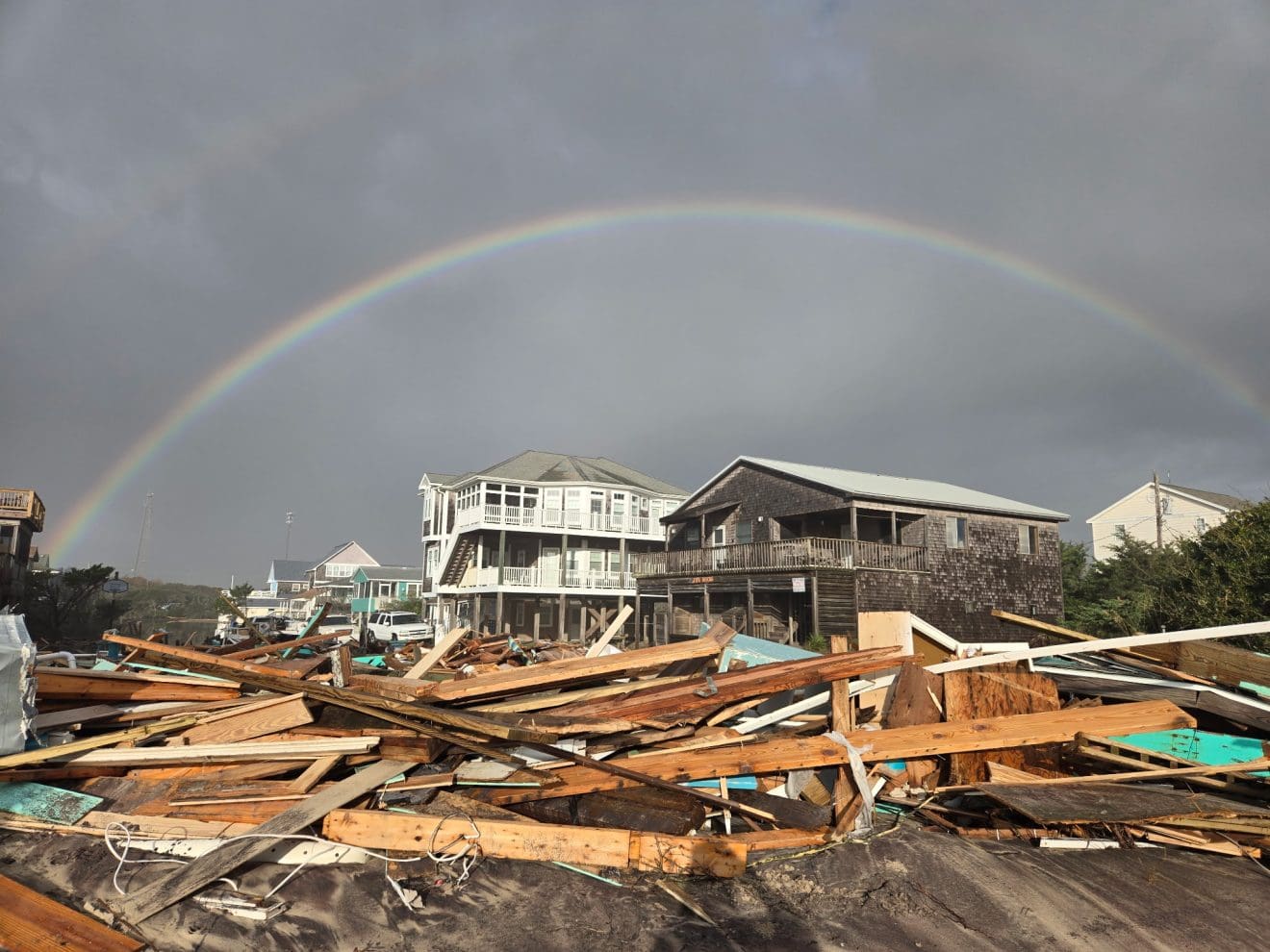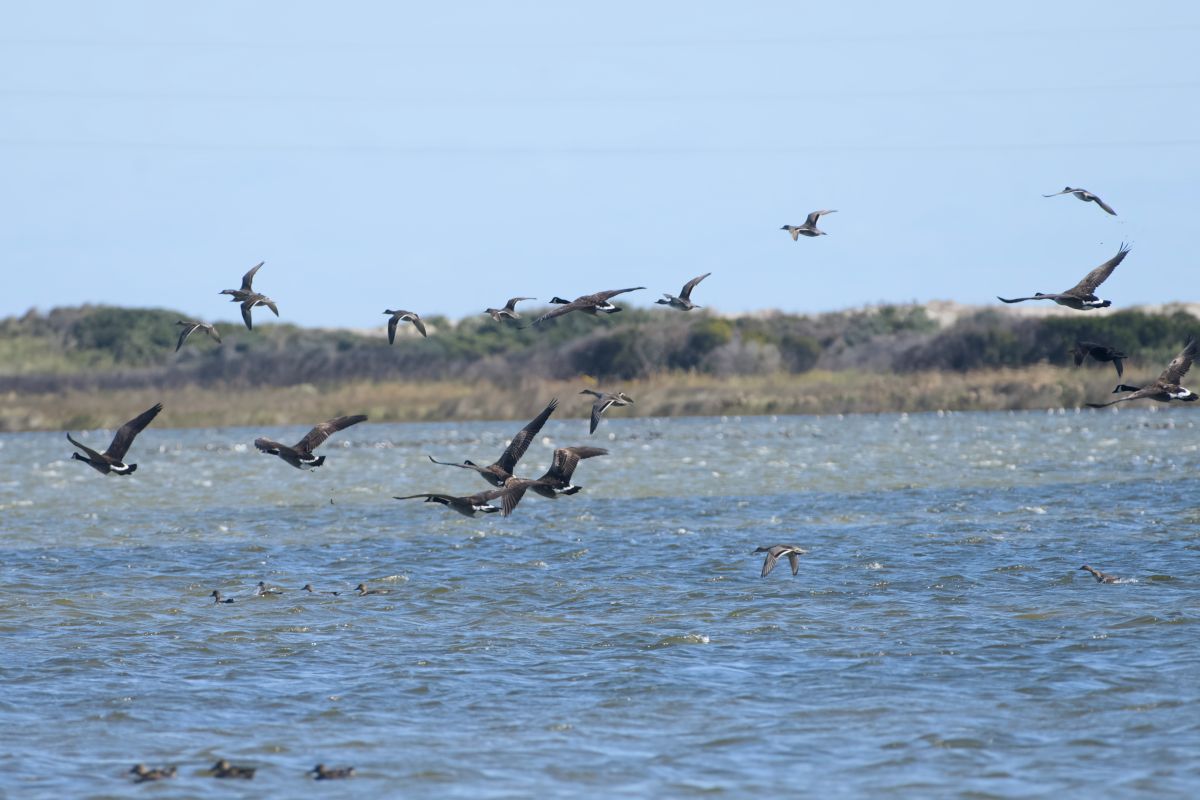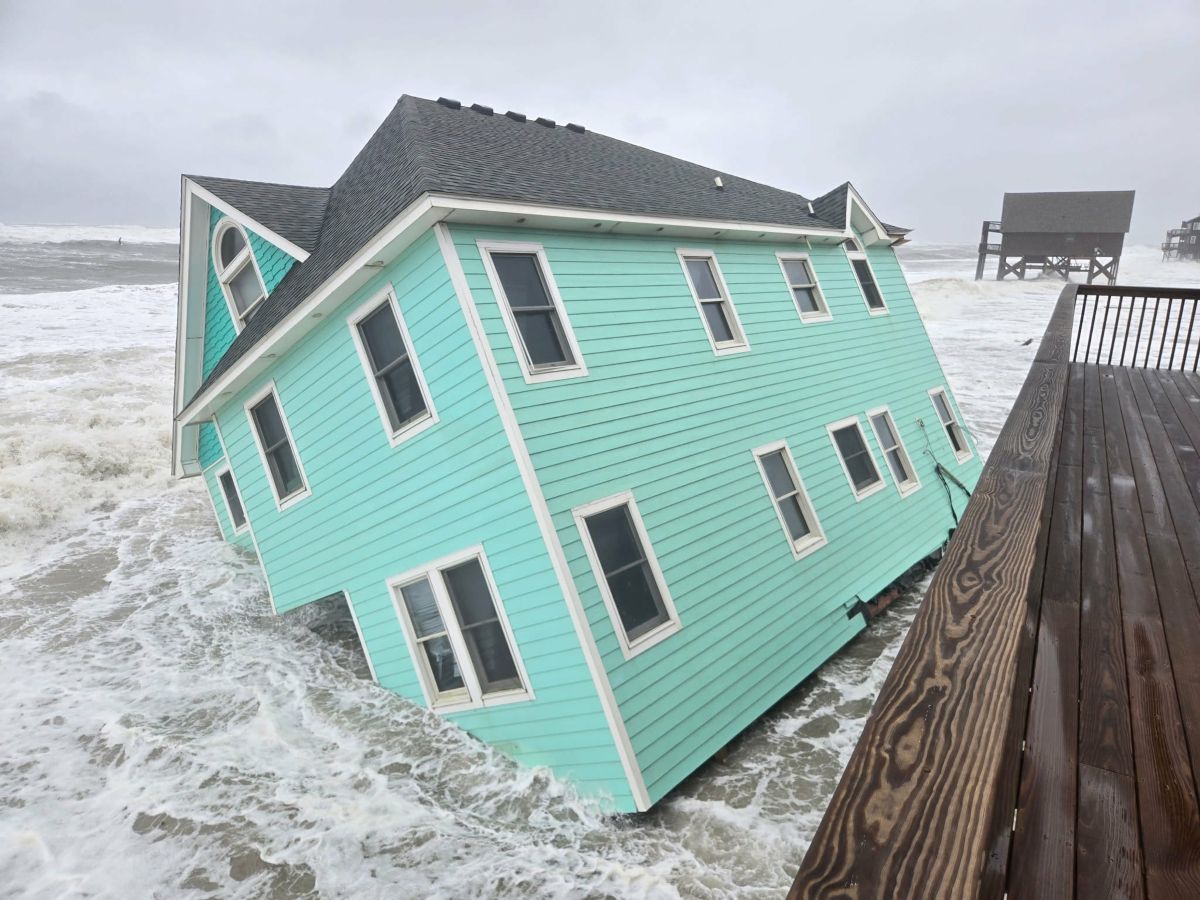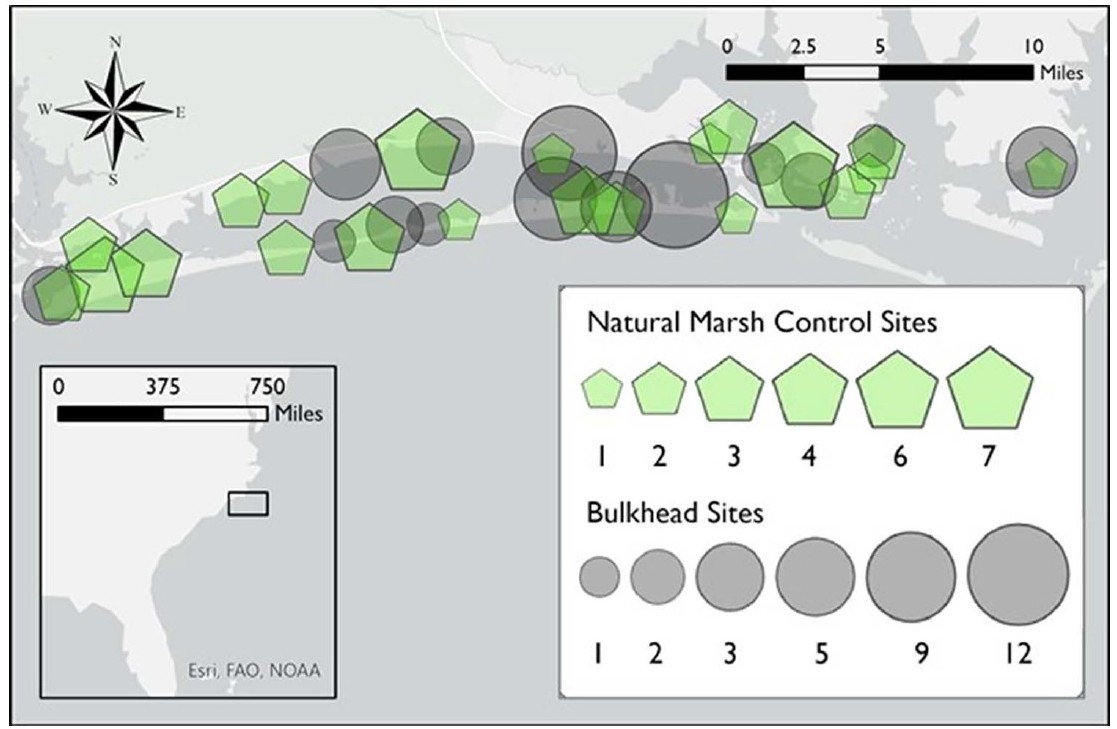
Researchers found in a recent study that, over the long term, bulkhead structures have a “significant negative effect” on marsh habitat size.
Using high-resolution imagery from 1981 of Carteret County’s Bogue and Back sounds and Newport and North rivers, the team measured the marsh extent, or total marsh area, at 45 sites with bulkheads and 45 natural sites, or those without the type of hardened structure. The 1981 measurements were then compared to the data from images collected in 1992, 2006 and 2013 of the same 90 sites.
Supporter Spotlight
The study found that all 45 bulkhead sites experienced marsh shoreline erosion during the 32-year study period, with complete marsh loss at 11% of the sites with bulkheads. More than 80% of the 45 natural marsh control sites experienced shoreline erosion, but at seven sites, around 15%, the marsh shoreline accreted waterward. None of the control sites experienced complete marsh loss.
“Our study found bulkheads nearly tripled the rate of marsh loss over a 32-year period. All of the 45 marshes we studied in front of a bulkhead got smaller or disappeared entirely,” Principal investigator Brandon Puckett explained to Coastal Review.

Puckett is a research marine biologist for the Coastal Resilience, Restoration and Assessment Branch in National Oceanic and Atmospheric Administration’s National Centers for Coastal Ocean Science, which partnered with Duke University and North Carolina Division of Coastal Management on the study.
“At the 45 natural marsh sites without bulkheads, the story was different. While many of them also eroded, more than a third actually held their ground or even grew by migrating inland into upland habitat. Bulkheads prevent marsh migration leading to a process known as ‘coastal squeeze’ whereby the marshes are not only eroding at the front edge, but are also blocked from migrating upland,” the Beaufort-based scientist said.
The study, “Bulkheads Reduce Salt Marsh Extent: A Multidecadal Assessment Using Remote Sensing,” was published this summer in the nonprofit Coastal Education and Research Foundation’s Journal of Coastal Research.
Supporter Spotlight
“Think of it this way,” Puckett continued. “Over the 32 years of our study — close to the length of a mortgage — the average marsh in front of a bulkhead lost about 15 feet of width. A natural marsh, on the other hand, lost only about 5 feet of width on average, because it could often make up for erosion by migrating upland.”
Of Carteret County’s 1,530 miles of estuarine shoreline, salt marsh accounts for about 1,270 miles, roughly 87 miles is hardened with bulkheads, and the remaining 11% is a different shoreline type or hardened structure other than bulkheads, like riprap.
The Division of Coastal Management, which is under the North Carolina Department of Environmental Quality, calls bulkheads the “most commonly used estuarine shoreline stabilization method” in the state “but could have deleterious impacts on the marsh habitats where they are being constructed.”
Factors contributing to the deterioration of salt marsh habitats include sea level rise and coastal development, which often result in hardened shoreline stabilization structures like bulkheads or seawalls constructed to protect against coastal hazards such as erosion, flooding and subsequent property damage, according to the study. “Concurrently, the many ecosystem services salt marshes provide, such as storm surge protection, carbon sequestration, improved water quality, and nursery habitat, are also diminishing.”
Authors state that the study is intended to offer a better understanding of how hardened shorelines like bulkheads “can have a significant negative effect on marsh extent through increased erosion of the waterward edge and prevention of landward migration with” sea level rise.
Why look at bulkheads and marsh loss?
Puckett told Coastal Review that the team decided to pursue the study after they realized they were “watching two powerful trends collide: the decline of essential marsh habitats and the increase in shoreline armoring,” provoking the question “’Is the solution to one shoreline erosion (bulkheads) actually making the other problem — marsh loss — worse?’”
He noted that scientists have long suspected that the hardened structures harm marshes but there wasn’t a lot of long-term data demonstrating these impacts. “We wanted to look back in time to objectively compare the long-term rates of change in marsh loss in locations with and without shoreline armoring.”
To get what Puckett called a “fair, apples-to-apples comparison,” the team “essentially became historical detectives” using the old aerial photographs, which were taken around low tide, when marsh shorelines were most visible. The study area was chosen because the historic aerial imagery was available.
They pored over the 1981 photos to find 45 locations where a fringe of salt marsh already existed with a bulkhead behind it. Then, for each of those 45 bulkhead sites, they located a nearby natural marsh without a bulkhead.
“We were careful to select control sites that were exposed to similar wave and wind conditions so that we were comparing like with like,” Puckett continued. “We meticulously traced the waterward and landward edges of the marsh at each site for each of the four imagery sets. By comparing these digital outlines over time, we could precisely measure both the erosion at the front of the marsh and its migration (or lack thereof) at the back.”
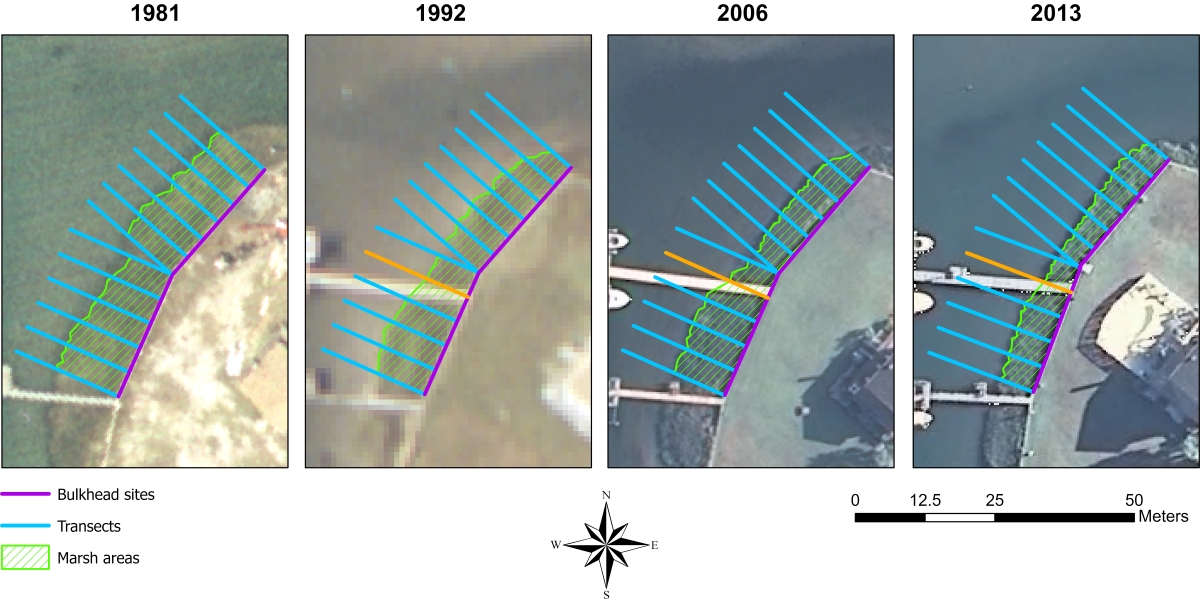
One of the more striking surprises from the study, Puckett said, is that the negative effects of bulkheads are almost invisible over shorter time spans.
“When we analyzed the data in smaller chunks — say, over a seven- to 14-year period — the difference in erosion rates between the bulkhead and natural sites wasn’t statistically significant. It was only by looking across the entire 32-year period that the dramatic, long-term impact became undeniable,” he said. It’s a true ‘death by a thousand cuts,’ and it tells us that short-term assessments can easily miss the entire story.”
The discovery also raises a new question about what’s driving erosion.
“We found that the fastest erosion rates occurred between 2006 and 2013, the period during our study with the highest rate of relative sea-level rise,” he said, “but not the stormiest from a tropical storm and hurricane perspective. This suggests that the constant, daily pressure of higher water levels might be a more powerful force in eating away at marsh edges than the occasional big storm, which challenges some common assumptions.”
‘Study is unique’
Authors state that this study is “the first to investigate the long-term impacts of structures on loss of marsh extent and provide useful information for better understanding the effects of shoreline hardening on salt marsh ecosystems,” which Puckett expounded on for Coastal Review.
“This study is unique for a few key reasons,” Puckett said. “Conceptually, we’ve known that bulkheads can expedite loss of marsh through reflecting wave energy and preventing migration, but this is one of the first studies to provide empirical evidence to support our conceptual understanding.”
The study analyzes more than 30 years of data, enabling the team to illustrate the slow, cumulative impacts that shorter studies could miss. “Environmental changes often don’t happen overnight, and this long-term view is critical,” he continued.
The research specifically focuses on what happens to the existing marsh that is left in front of a bulkhead, as well.
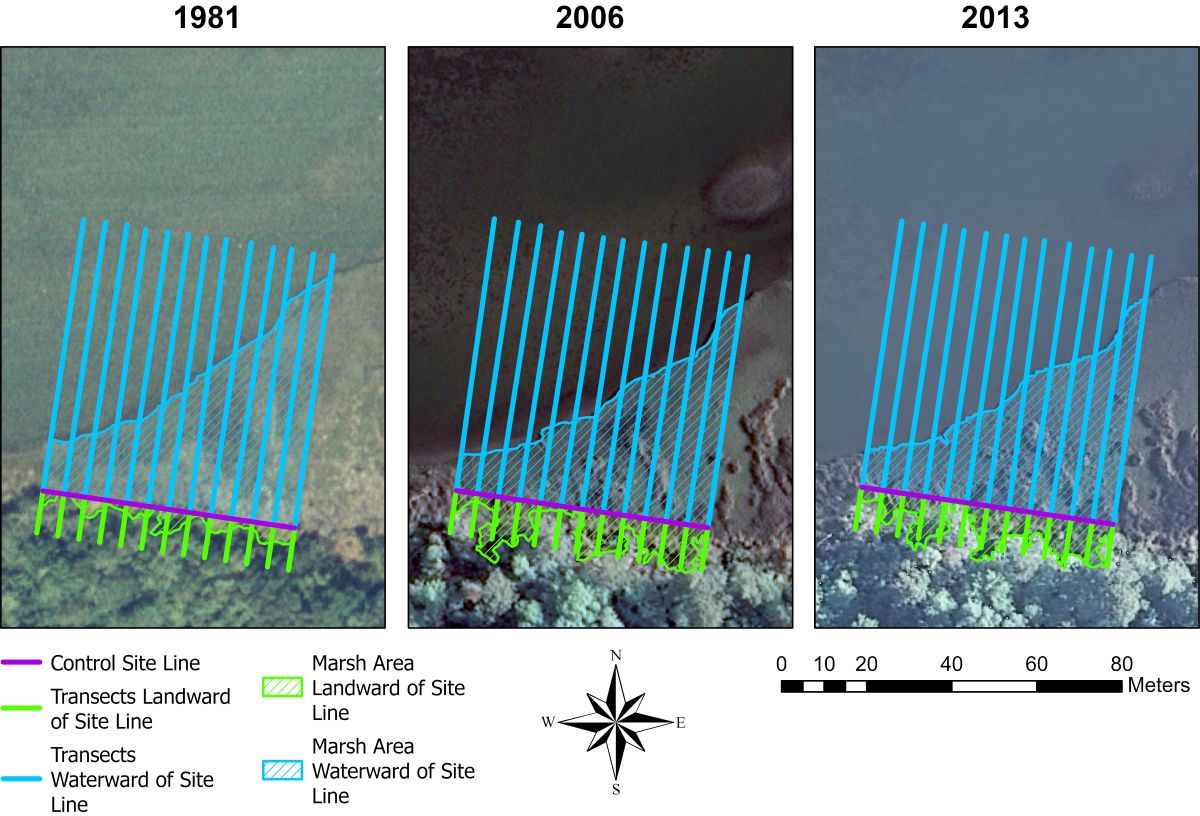
“Many people might think that as long as you leave some marsh, you’re preserving its function. Our work shows that while this may be true in the short-term, this leftover fringe marsh is often living on borrowed time because it can’t easily adapt to rising seas,” Puckett said.
And lastly, the team didn’t just measure erosion at the water’s edge, but also measured the movement of the landward boundary.
“This allowed us to calculate the net change in marsh area and definitively show that preventing landward migration is a critical factor that turns a shoreline erosion problem into a catastrophic loss of habitat. It’s this comprehensive look at both sides of the marsh over such a long period that is a unique component of this research,” he said.
Though disheartening, Puckett said it’s crucial to know that “this isn’t just a story about loss. It’s also a story about resilience and hope. The ‘good news’ from our study is that where marshes had space to move, they did.”
In the 45 natural sites studied, more than a third of the marshes were stable or even grew by migrating into upland habitats, both proving that marshes are naturally resilient and can adapt if given the room and pointing to a path forward to help address marsh erosion and migration.
“First, to combat erosion at the water’s edge, we can use living shorelines. Instead of hard walls, these solutions use natural materials like oyster reefs and native plants to slow wave energy while maintaining the vital intertidal connection between land and water. This helps preserve the marsh’s front edge. However, a marsh still may need room to move inland to adapt to sea-level rise,” Puckett said.
And a “second, equally critical part of the solution is to protect marsh migration corridors through land-use planning and conservation,” he added.
The corridors are undeveloped land set aside to allow marshes to move upland to survive rather than drowning in place.
“It is the combination of using living shorelines to reduce erosion and allowing for landward migration that can reduce the effects of coastal squeeze. We have a chance now to help protect our salt marshes that are the nurseries for our fisheries, our buffer from storm surge, and our natural water cleansers,” Puckett said.



